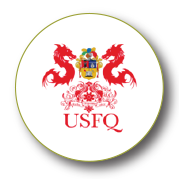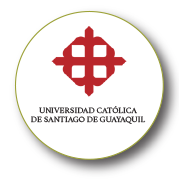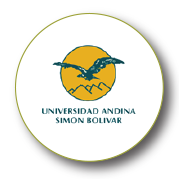La USFQ será anfitriona de un encuentro científico internacional para rendir homenaje a Humboldt
Las Universidades San Francisco de Quito (USFQ) e IKIAM, la Sociedad Internacional de Biogeografía y la Red Latinoamericana de Biogeografía organizan un encuentro científico internacional para rendir homenaje a Alexander von Humboldt, por los 250 años de su natalicio, con la muestra de las investigaciones más recientes que explican la distribución de plantas y animales en el mundo, así como sus problemas de conservación.
El encuentro que se desarrollará del 5 al 9 de agosto en el campus de la Universidad San Francisco de Quito pretende explicar los patrones recurrentes en la naturaleza, además de ser un espacio para fomentar las interrelaciones entre científicos y estudiantes de todo el mundo.
Durante los 5 días del Congreso se abordarán temas relacionados con la ecología, medio ambiente, geología, fauna y flora, de todo el mundo, pero especialmente de los Andes, Amazonía y las Islas Galápagos.
En el encuentro estarán conferencistas como Naia Morueta-Holme, Brigitte Baptiste, Joana Meier, Andrew Crawford, Alberto Gómez Gutierrez, entre otros.
El programa
| TUESDAY, AUGUST 6th | |||||
| 9:00 | Shakespeare Theater Registration-Coffee break | ||||
| 9:15 | |||||
| 9:30 | |||||
| 9:45 | |||||
| 10:00 | Shakespeare Theater Opening | ||||
| 10:15 | |||||
| 10:30 | Shakespeare Theater PLENARY TALK: Biotic changes on Chimborazo, the cradle of plant biogeography Naia Morueta-Holme | ||||
| 10:45 | |||||
| 11:00 | |||||
| 11:15 | Walk to Main Campus | ||||
| 11:30 | |||||
| Teatro Calderón de la Barca | Teatro Casa Blanca | Salón Azul | Maxwell 107 | ||
| Historical Biogeography | Island Biogeography | Biodiversity Patterns and Mainteinance | Functional Biogeography | ||
| 11:45 | Explosive diversification following continental colonizations by canids. Lucas Porto | Speciation of the genus Urosaurus in the Revillagigedo Archipelago. Juan Gutiérrez | The origin and assembly of the alpine biome in the Hengduan mountains. Wen-Na Ding | A synthesis of animal‐mediated seed dispersal of palms reveals distinct biogeographical differences in species interactions. Gabriel Muñoz | |
| 12:00 | Environmental change: The extinction of Sparassodonta clade in South America. Kateryn Pino | Invasion dynamics of a specialist solitary bee and its effect on the pollination system of an endangered island herb. Brittany Harris | Geographic and environmental determinants of floristic structure in a biodiversity hotspot. Qin Li | Plant trait-environment dynamics challenge the Humboldtian view of nature during the Holocene. Pierre Gauzere | |
| 12:15 | Long distance dispersal or dispersal through land bridges? — An integrated biogeographic study of Juglandaceae based on molecular and fossil evidence. Qiuyue Zhang | Extinction-driven changes in island communities: worldwide and in Mauritius and Krakatau. Julia Heinen | Dacryodes (Burseraceae): un género huérfano en América. María Cristina Martínez | Dialects in the high-frequency song of the Ecuadorian Hillstar. Fernanda Duque | |
| 12:30 | Lunch break | ||||
| SYMPOSIUM: Architecs of Variation: How Climate and Physiology Shape Patterns of Biodiversity. Organized by Alisha Shah & Cameron Ghalambor | Island Biogeography | SYMPOSIUM: Geology and climate change as drivers of biodiversity and evolutionary processes in the Andes-Amazonian system. Organized by Carina Hoorn & Hanna Tuomisto | Conservation Biogeography | ||
| 14:00 | From Humboldt to Janzen; How latitude and mountains generate biodiversity. Cameron Ghalambor | Life-history evolution in contrived communities of invasive livebearing fishes in the Hawaiian Islands. Spencer Ingley | The tectonic evolution of the Northern Andes. Cristian Vallejo | Conservation priorities for Romerolagus diazi based on Species Distribution Models including biotic interactions. Luis José Aguirre López | |
| 14:15 | Climate Variability and Thermal Tolerance in Aquatic Insects: Can they Stand the Heat? Alisha Shah | Fanged frogs reset expectations of terrestrial vertebrate evolutionary diversification in an iconic island archipelago. Rafe Brown | Leaf-wax lipid biomarker paleoaltimetry and eco-hydrologic evolution of the south-central Andean Plateau (Puna). Alexander Rohrmann | Biogeographical insight into evolution of bird migration. Bela Arora | |
| 14:30 | Stretched to the limits: field investigations to examine the predictive power of critical temperatures for understanding range shifts in amphibians. Alessandro Catenazzi | Narrow-range endemic ground beetles in Ecuadorian páramos: Towards a biogeography of Andean sky islands. Pierre Moret | Neogene climate, vegetation, and elevation history of the Central Andean Plateau. Camila Martínez Aguillón | Through the extinction filter: historical and contemporary patterns of vulnerability of the most extinction-prone bird family. Lucile Leveque | |
| 14:45 | Effects of temperature variation along elevational gradients in the Andes: the case of a poison frog. Mónica Páez-Vacas | Diversification patterns of ground beetles and rove beetles from the highlands of Ecuador. Sofía Muñoz-Tobar | The elevational dance of the Andean high mountain biome in the Pleistocene arena. Suzette Flantua | Bioregionalization approaches for conservation: methods, biases, and their implications for Australian biodiversity. Cristian Montalvo-Mancheno | |
| 15:00 | Can plant thermal tolerance evolve under climate change? A comparison of central and edge populations. Rachel Wooliver | Connecting spatial trophic ecology with processes of population differentiation and speciation in Galápagos marine iguanas (Amblyrhynchus cristatus). Timm Reinhardt. | Amazonian plant species distributions mapped by satellite. Hanna Tuomisto | The spatial and temporal dynamics of interspecific associations under global changes. Stanislas Rigal | |
| 15:15 | Discussion | Use of drone and satellite images to map native and invasive vegetation distributions in island systems: the Galapagos Islands. Gonzalo Rivas-Torres | Explosive radiations of the Asteraceae in the Andes: a history of climate change, geology, isolation and reconnexion. Mauricio Diazgranados | Documentary Projection: Sky Islands, a time travel in the Andes Mountains. Catalina Giraldo | |
| 15:30 | Coffee break | ||||
| Environmental Tolerance | SYMPOSIUM: Island Biogeography of the Antropocene. Organized by Gonzalo Rivas-Torres & Jaime Chaves | SYMPOSIUM: Geology and climate change as drivers of biodiversity and evolutionary processes in the Andes-Amazonian system. Organized by Carina Hoorn & Hanna Tuomisto | Conservation Biogeography | ||
| 16:00 | Are tropical thermal barriers ‘higher’ on the way up or down? Pol Pintanel | Common Denominators of Adaptive Radiation on Islands. Rosemary Gillespie | Topography, erosion, and biodiversification in continental freshwaters. James Albert | Evaluation of five taxa as surrogates in the Transmexican Volcanic Belt, Mexico. Tania Escalante | |
| 16:15 | Thermal tolerance across latitudinal and elevational gradients in Neotropical plethodontid salamanders Sean Rovito | Isolation, Fragmentation, and Plant Endemism in the tropical Andes. Jens Mutke | Bird diversification and the evolution of Amazonian landscapes. Camila Ribas | New guidelines for ex situ conservation- integrating geography and genetics. Sean Hoban | |
| 16:30 | Functional traits, climate and soil drive niche differences of Damburneya (Lauraceae) sympatric species in a Mexican tropical rain forest. Laura Giraldo-Kalil | Disease Ecology of Galapagos Birds and their Parasites. Patricia Parker | Discussion | Implicaciones biogeográficas espaciales para la evaluación de las categorías de amenaza: El caso de las ranas venenosas en Ecuador. Mauricio Ortega-Andrade | |
| 16:45 | Polytolerance to abiotic stress and range filling in European and North American woody species. Giacomo Puglielli | Ecological and biogeographic patterns of the Scalesia (Asteraceae) endemic genus in Galapagos. Gonzalo Rivas-Torres | Diversificación altitudinal en el Bloque Norte de los Andes vista a través de múltiples taxa. Viviana Ayus | ||
| 17:00 | Elevational and microclimatic drivers of thermal tolerance in Andean Pristimantis frogs. Pol Pintanel | Discussion | Patrones de distribución de la diversidad alfa y beta de murciélagos en las regiones biogeográficas de Colombia: base para su conservación. Juranny Astorquiza | ||
¿Ya conoces nuestro canal de YouTube? ¡Suscríbete!









Inversión extranjera: Una atracción irresistible
La vida bajo nuestros pies, una invitación a valorar el suelo
UTPL impulsa la formación de 2 000 docentes en inclusión y enseñanza del inglés
UTPL recibe certificación Great Place to Work como reconocimiento a su cultura laboral
La ciudad sin proyecto